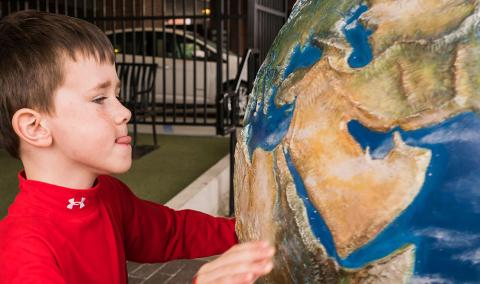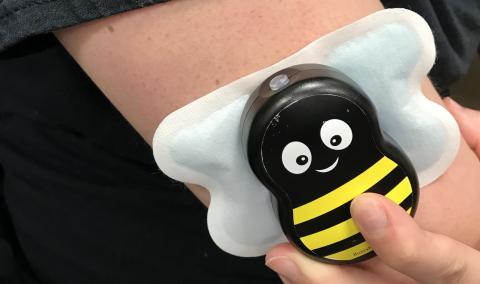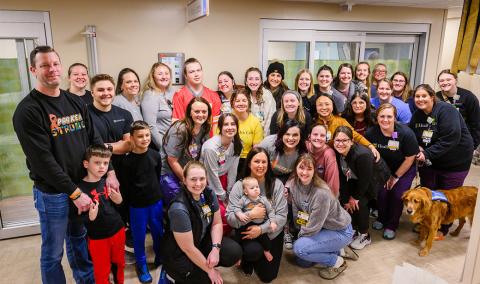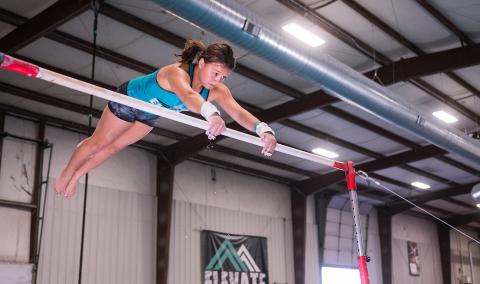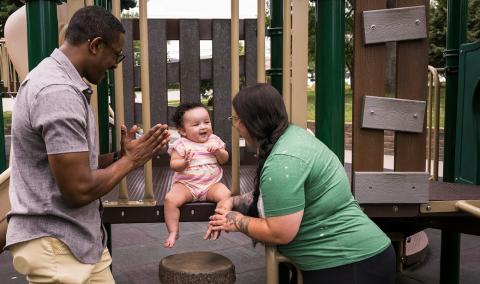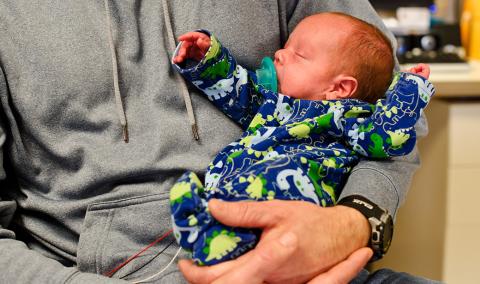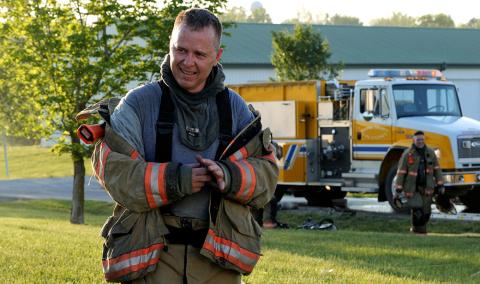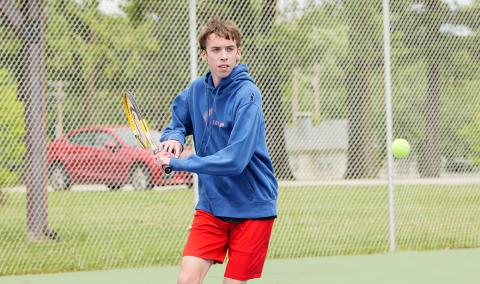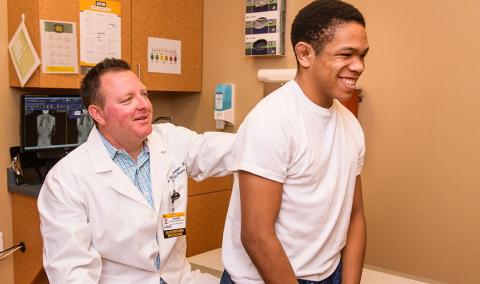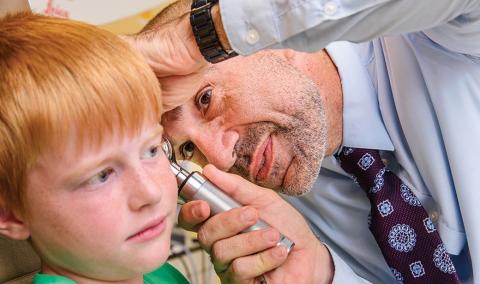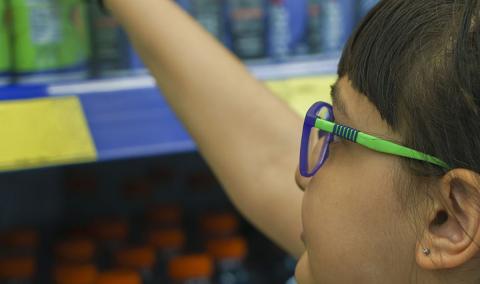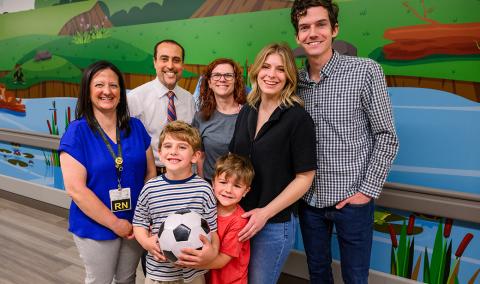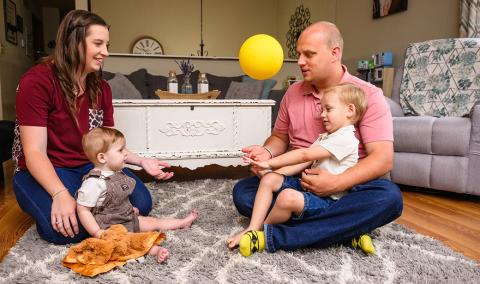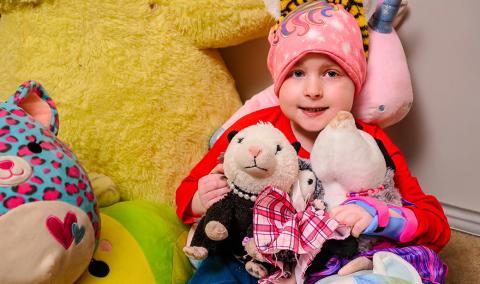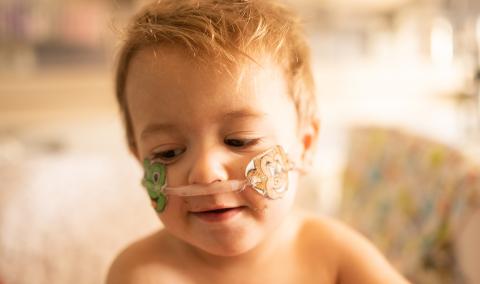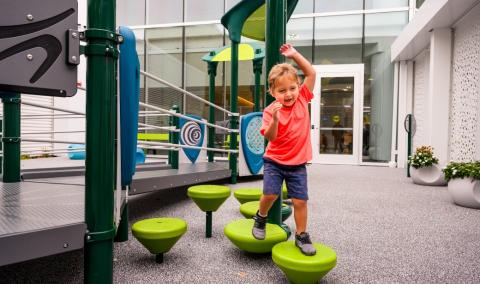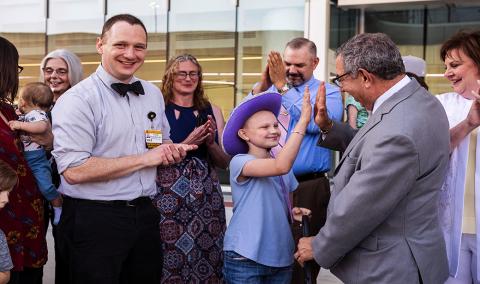Craniosynostosis is a condition that affects the growth and development of the head. When your child is affected by this condition, you may feel anxious and have many questions.
Rest assured, the Children's Health specialists at University of Missouri Health Care Children’s Hospital are experienced in treating children with craniosynostosis and are here to help.
Our compassionate doctors work with you and your child to understand this condition. We will be by your side at every step, from diagnosis to treatment to surgery, if needed.
Frequently asked questions about craniosynostosis
Check out the answers to commonly asked questions about this condition.
What is craniosynostosis?
The skull is made up of several flat bones that fit together like the pieces of a jigsaw puzzle. The joints between these bones, called “sutures,” usually remain loose and open during growth and development to allow the brain to grow and expand. Craniosynostosis is the condition in which these sutures grow together or become fused prematurely. When that happens, the skull can no longer stretch and expand to accommodate the growing brain.
Is this condition painful?
In general, craniosynostosis is not a painful condition. However, if there is increased pressure on the brain, it can cause:
- Abnormalities affecting the face and hands
- Headaches
- Irritability
- Nausea
- Problems with neural development (severe cases)
- Vomiting
How do I know if my baby’s slightly abnormal head shape is something to worry about?
Abnormal head shapes in babies are quite common. In general, abnormal head shapes can be caused by either craniosynostosis or by external forces that push on the skull to deform it. The latter condition is much more common and is called deformational plagiocephaly. If your baby has an abnormal head shape, you should raise this concern with your pediatrician.
What causes craniosynostosis?
There are three main theories about the cause of craniosynostosis:
- Multiple factors. Most likely, as with many other congenital (present at birth) anomalies, multiple factors can contribute to this condition. Craniosynostosis can be caused by a genetic mutation, such as Apert’s syndrome.
- Mechanical forces. There is evidence that mechanical forces can create suture fusion. For example, when the brain is very small and is not expanding or growing normally, the cranial sutures can fuse prematurely because there is no force from the brain keeping them open.
- Abnormality of the sutures. Finally, there is the theory that there is a natural biochemical abnormality of the sutures themselves that causes them to fuse prematurely.
What is the treatment for children with craniosynostosis?
While we treat every patient individually with a customized care plan, some generalizations are possible. Pediatric craniosynostosis will likely require surgery. Members of our craniofacial treatment team who examine babies with craniosynostosis early in life include a:
- Craniofacial surgeon
- Pediatric neurosurgeon
- Pediatric neuropsychologist
- Pediatrician (who specializes in treating infants with craniofacial anomalies)
- Ophthalmologist
- Geneticist
Depending on your child’s particular case, other specialists may also be involved in the treatment plan.
Your child’s team will use a computerized tomography scan (CT scan) — a special type of X-ray — to study the bones of the skull and the brain. If there are no signs of increased intracranial pressure by physical examination or by CT scan, then your child will likely have his or her surgery at approximately one year of age. If there is increased intracranial pressure, then your child will have surgery sooner. Your doctors will evaluate your child periodically until it’s time for surgery to ensure you and family members feel comfortable throughout the whole process.
The craniofacial surgeon and the neurosurgeon will work together to perform your child’s surgery. The surgeon expands the skull by removing and reshaping the bones of the skull to give your child’s brain room to grow and also to correct the abnormal head. While this is a very specialized and complex surgical procedure, it is now performed safely and effectively with modern anesthetic and surgical techniques at University of Missouri Children’s Hospital.
In some selected cases, another surgical method may be an option. An endoscopic strip craniectomy is a less invasive procedure that involves removing a large strip of bone containing the fused suture through small incisions, sometimes using an endoscope to allow better visualization. After the surgery, your child will wear a custom-made molding helmet to reshape the skull. The success of this procedure depends on the use of a molding helmet for many months after surgery. Your doctor will discuss with you whether your child is a candidate for this type of surgery.
What type of relationship will we have with our child’s surgeon?
Because we follow children with craniosynostosis closely before, during and after their surgery, you and your family will become very familiar with your surgeons. After the surgery, it is important for us to continue to monitor your child’s growth and development over the long term. This ongoing observation involves physical examinations and periodic CT scans to ensure there are no signs of any problems.
Related Conditions & Treatments
- Adolescent Medicine
- Pediatric Chest Wall Disorders Program
- Down Syndrome
- Emergency Care for Kids
- Feeding Tubes for Children
- Hyperbaric Oxygen Therapy
- Juvenile Diabetes
- Neonatology
- Pediatric Anesthesiology
- Pediatric Cancer
- Pectus Carinatum
- Pectus Excavatum
- Pediatric Cardiology
- Pediatric Dermatology
- Pediatric Development and Behavior
- Pediatric ENT (Ear, Nose and Throat)
- Pediatric Epilepsy
- Pediatric Eye Care
- Pediatric Gastroenterology
- Pediatric Infectious Diseases
- Pediatric Inpatient Rehabilitation
- Pediatric Nephrology
- Pediatric Neurology
- Pediatric Neurosurgery
- Pediatric Orthopaedics
- Pediatric Plastic Surgery
- Pediatric Primary Care
- Pediatric Psychiatry
- Pediatric Pulmonary Medicine
- Pediatric Sleep Medicine
- Pediatric Surgery Services
- Pediatric Surgical Services
- Pediatric Urology
- Pediatric Vascular Anomalies
- Pediatric Weight Management
- Sickle Cell Disease
- Aerodigestive Program



